One of the biggest problems with retro handhelds is despite being marketed as portable consoles, very few of them can actually fit in your pocket. As someone who commutes a lot, having something that is small enough to shove in a pocket makes my life easier. As much as I love the high-end power of the Pimax Portal and AYANEO Pocket Air, neither device is something I can take out with me without needing a carry bag.
That’s where the Miyoo Mini Plus comes in. At just 4.25 inches, this budget device manages to pack in enough power to make it outright better than other budget offerings and it’s dinky enough to fit in my pocket.
It’s not a perfect console by any means, but given its low price, it does more right than it does wrong.
Price and Value.
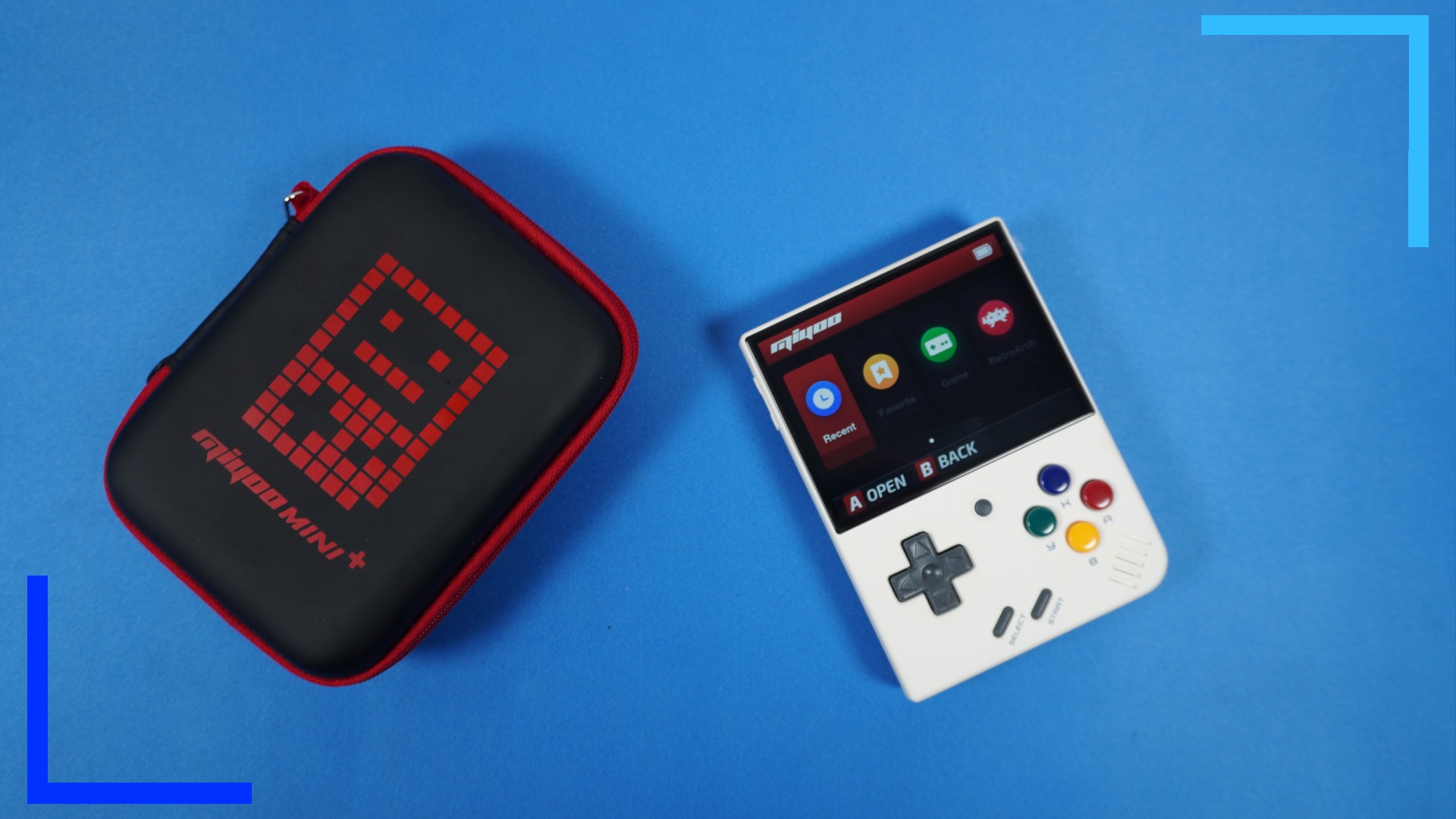
It’s important to note the Miyoo Mini Plus costs around $70 depending on where and who you purchase it from (editor’s note: I went with Droix because the prices weren’t inflated). That price is something you need to keep in perspective. More powerful devices, like the Retroid Pocket 4, come in at $149. The Retroid Pocket 4 is sure to be the more powerful console out of the two, but there’s no getting around the fact the Retroid offering is over double the price of the Miyoo Mini.
Let’s go with something a little closer in terms of power. The Anbernic ARC-D shares similar performance and costs $89.99, although the design on the handheld here looks more like a SEGA Saturn controller rather than a Game Boy.
I’d argue the best comparison is the Anbernic RG3XX Plus at $63.99. Both handhelds share similar designs and power-wise, sit in the same field. The RG3XX Plus is the stronger offering, but the increased size means it’s not as pocket-friendly as the Miyoo Mini.
In terms of value, it’s not possible to feel short-changed by the Miyoo Mini unless you paid above the prices I listed. I always go back to my Retro Mini review. That device was cheaper than the Miyoo Mini and absolutely sucked in every way possible – the performance was terrible and the screen quality was subpar.
While the Miyoo Mini does have problems, it’s not a cheap toy designed to sell people nostalgia like the Retro Mini was. It is a fully working system with a great form factor and a low price.
Build Quality.
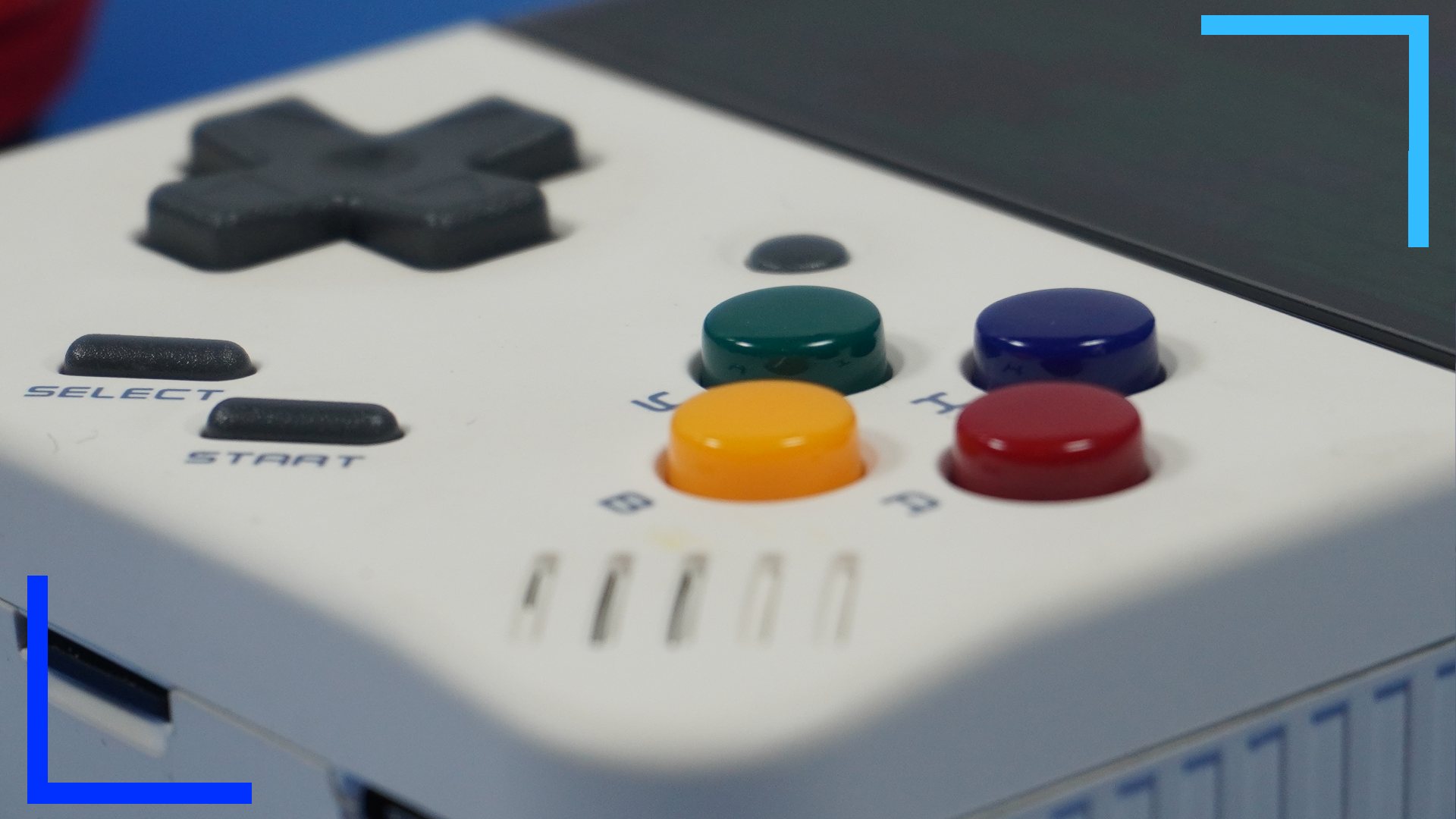
You aren’t going to get a Steam Deck level of quality at this price point. That just isn’t possible. But what we do have a sturdy, matte plastic that feels nice to the touch. Buttons aren’t quite as nice as the plastic shell, but they do the job.
The problem with the main four face buttons – that’s Y, X, A, and B – is that they’re glossy to the point of feeling almost slimy. That said, they do offer a nice amount of bounce and haven’t gotten stuck during my time with the Miyoo Mini.
The start and select and menu buttons are tiny but they work. Given the smaller nature of the device, I understand the logic that went into making them this size. No one wants massive buttons that get hit by accident.
I am, however, far less forgiving of the back buttons. L2 and R2 sit in the middle of the back and are slightly raised so you can distinguish them from the L1 and R1 buttons without seeing them, but because of the size of the device, they’re not naturally accessible. If you want to press them, you’re going to have to crank your fingers into some seriously awkward positions.
Admittedly this is a problem all of the smaller handhelds suffer from, but it’s still a problem that makes playing games like Tony Hawk’s or any first-person shooters unenjoyable.
Emulation Performance.
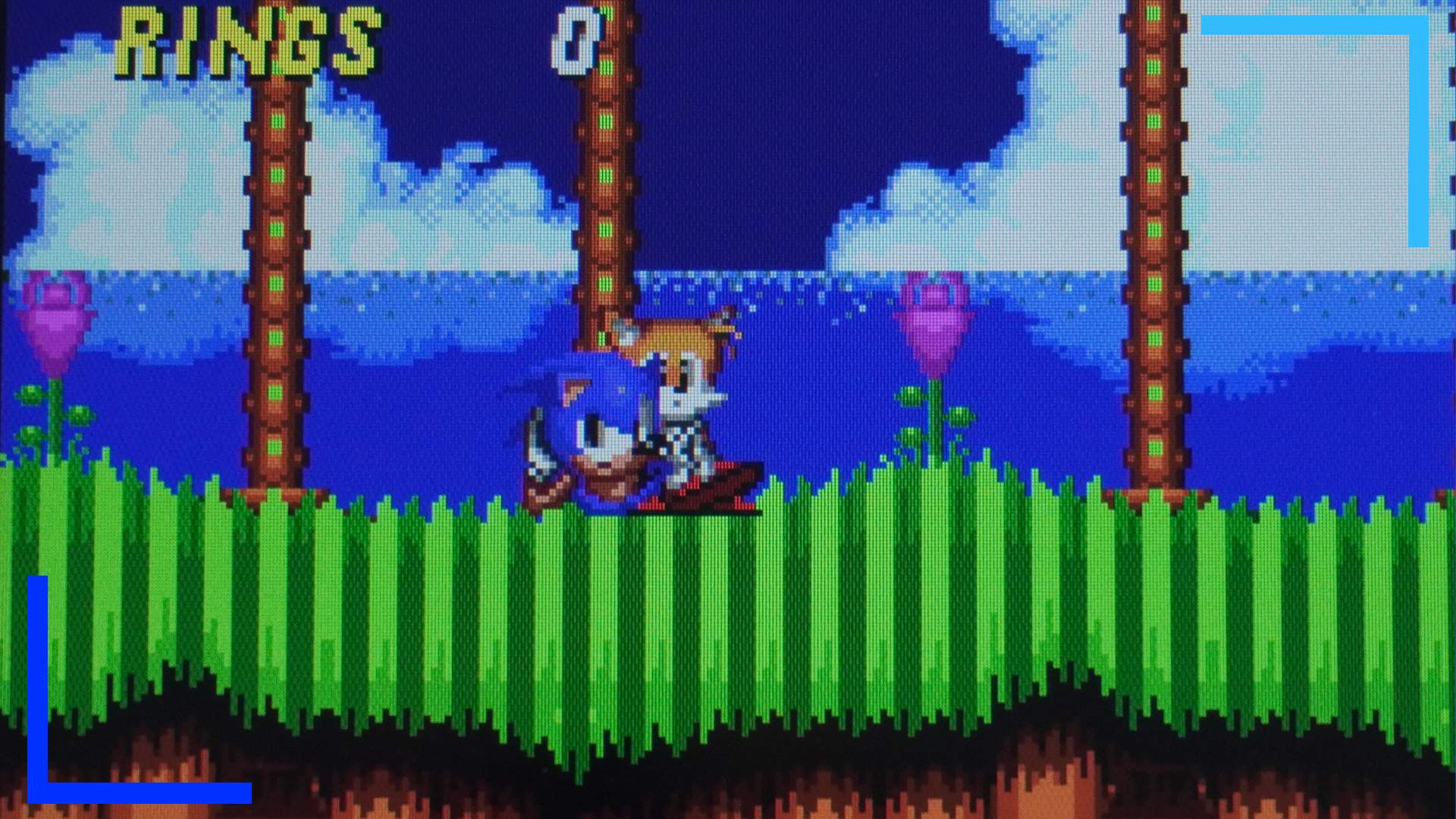
The Miyoo Mini is one of the most inconsistent retro handhelds I’ve ever used. The first time I played Crash Bandicoot 2 on PS1 I was met with some really offputting visual tearing and choppiness. Rebooting the console then fixed that.
When playing Super Mario World for the SNES, the screen didn’t transition smoothly between areas and pixelated artifacts appeared on-screen. Rebooting the console fixed that.
Normally with retro handhelds, something either works or it doesn’t. With the Miyoo Mini, something seems to cause the console to act up and behave oddly. Rebooting the console has fixed any problems I had every time, but it’s odd that I needed to do that. Thankfully these problems were few and far between, though. For 90 percent of the time, the Miyoo Mini worked as it should. Still, that’s weird, right?
In terms of power, the Miyoo Mini comes equipped with an ARM Cortex A7 Dual-Core Processor at 1.2GHz along with 128 MB of RAM. Compare that with the Retroid Pocket 4 Pro’s two sets of four A78 cores at 2.6 GHz with 8 GB of RAM and the Miyoo Mini seems pitiful by comparison.
What this means in simpler terms is the Miyoo Mini Plus is not going to be playing anything from the new-school retro era like GameCube, PS2, or Dreamcast anytime soon. Up to PS1 is where this device caps out, and even then, I’d argue due to the awful back buttons and lack of an analog stick, mean PS1 isn’t as playable on the Mini as it is on other handhelds.
For me, I can’t recommend the Miyoo Mini as a PS1 retro handheld. What I can recommend it as is a killer old-school retro handheld. If you want to play Game Boy, SNES, Genesis – basically anything from the 8 and 16-bit eras, then that’s where the Miyoo Mini is at its greatest.
Performance for those systems is solid despite the low specs and if you don’t need to use the back buttons, is comfortable to play on.
Operating System.
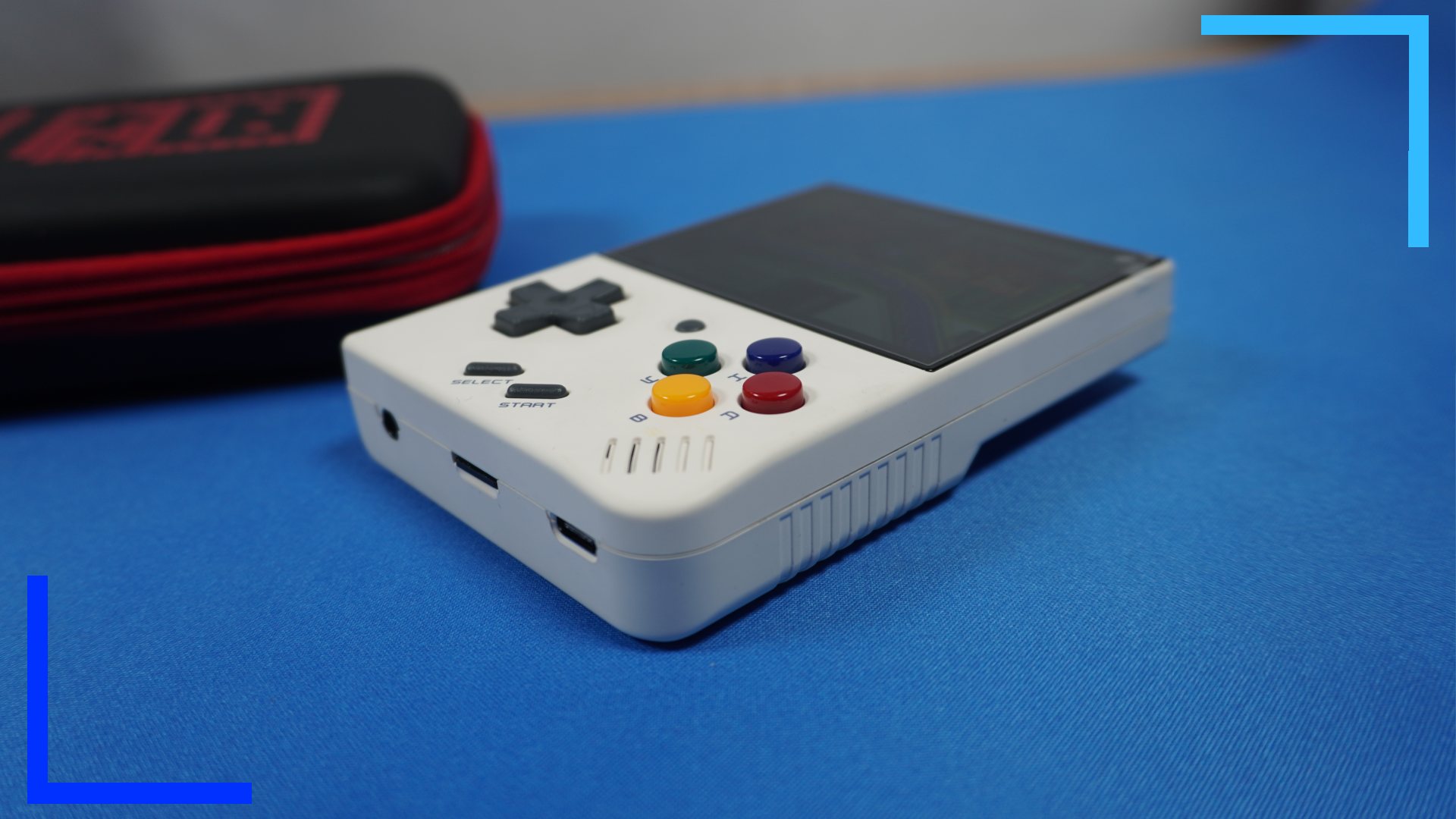
For this review, I’ve stuck with the stock operating system as that’s what the general public will be using. If you’re a little more tech-savvy, you can update the firmware to add new cores like Nintendo DS or even rip the operating out and replace it with something custom like Koriki or TriForceX.
I found the OnionOS operating system to be super basic but inviting. Compare it with the Anbernic RG350, which is an eyesore, and the Miyoo Mini looks stellar. There isn’t much here other than individual games, RetroArch, apps, and setting tabs, but I ended up feeling like this minimalist approach is fine. You don’t need to understand tech to be able to play the device. Everything you need is front and center and instantly accessible. You’ve even got a handful of themes to play with if you want to spice things up.
The way I see it is this: OnionOS isn’t anywhere near as deep as, say, SteamOS, but it does what it needs to and looks nice enough.
What is impressive is that Miyoo has included a menu button, so when I’m in-game and need to change a setting or turn off ugly overlays, the RetroArch menu is quite literally a button away. That’s intuitive and makes playing on the Mini all the more fluid and less confusing.
Difference Between the Miyoo Mini and Miyoo Mini Plus.
There are currently three versions of the Miyoo Mini – the Miyoo Mini V1 and V2, and the Miyoo Mini Plus. The Plus is the one that’s in current circulation and is easy to get hold of. It’s also around $20 more expensive than the original Miyoo Mini.
How do the two differ? The big one is the upgraded screen, although ‘upgraded’ is doing a lot of heavy lifting here. Basically, the screen in the Plus model is larger than the original – 3.5 inches to the OG’s 2.8.
The screen is also laminated, which is something we only saw in the V2 model of the original Miyoo Mini. What that means in practice is less light escapes, resulting in deeper blacks and less blurriness.
Buttons have also seen an upgrade and that’s why I mentioned earlier how nicely bouncy they feel. There’s more feedback compared with the V1 model.
The battery also got changed from 1900 mAh in the V1 and 2000 mAh in the V2 to 300 mAh in the Plus. In reality, this isn’t as impressive as it sounds. I averaged around five hours and didn’t notice enough of a difference to make it a huge selling point.
What’s In The Box?
- The Miyoo Mini Plus handheld.
- Hard case.
- USB-C cable.
- MicroSD to USB converter.
- Instruction manual.
- Screen protector and wipe.
- Optional microSD card with games.
Verdict.
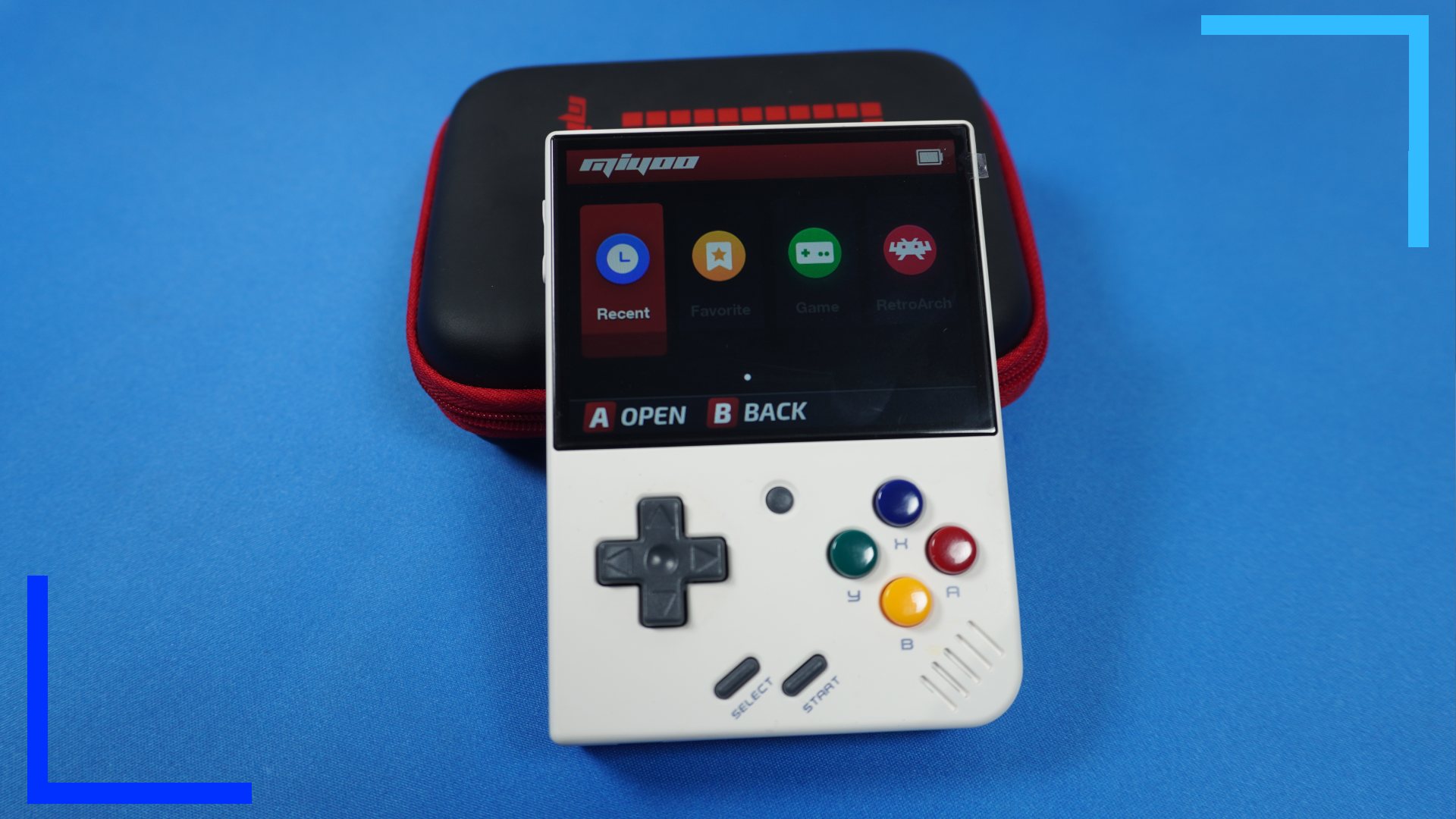
The Miyoo Mini Plus is all about the form factor. It’s a Game Boy, only small! Performance is decent given the low-specced nature of the device, but it’s important to know what it is you’re getting. If you want new-school retro like Dreamcast or PS2, you won’t find that here. PS1 is also pushing it. But for SNES and the like? It’s well worth picking up.
I’ll admit I’m not as besotted with the Mini as some people are – it’s hard to be as excited when you’ve got an RG ARC-D, Steam Deck, ROG Ally, and the rest – but for the price, I’ll happily admit the Miyoo Mini is easily the best budget handheld available.
Disclosure: Review unit purchased by me.| All photos captured by Wesley Copeland. To learn more about our review policy click here. | Alternatively, click here to find out why you can trust me.

